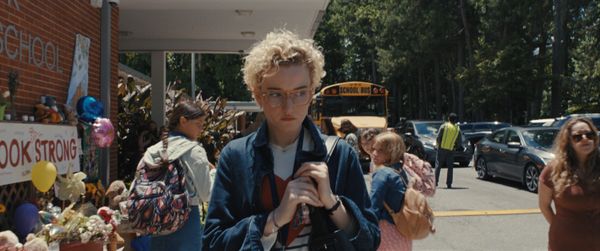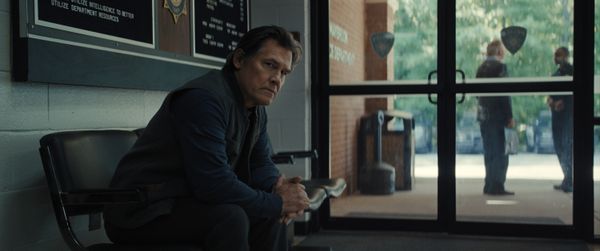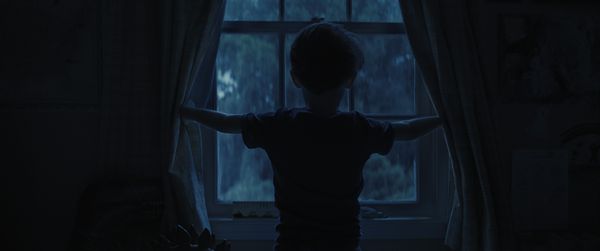Set in an upper-middle class enclave where 17 kids disappear, filmmaker Zach Cregger’s latest thriller asks us to confront the notion that small towns breed shared safety.
Half the fun of any horror movie is watching people make bad decisions. Walking down that dark stairway, checking out that noise in the attic—the delight isn’t just in the building tension, but also in asking oneself, “What would I do?” Certainly, I, a smart person, wouldn’t investigate every bump or thud coming from the floor above. But in the case of a community horror story—say, if a group of third-graders mysteriously awoke in the middle of the night and disappeared—we might ask ourselves much harder and more frightening questions that require us to look to each other for answers and support.
This is the premise of the new film, Weapons. Written and directed by Zach Cregger, the movie recounts how 17 children in a small suburban town called Middlebrook left their beds at 2:17 a.m. and synchronously ran off into the dark—not to be seen thereafter. All 17 were students in one third-grade class taught by Justine (Julia Garner); all but one of her students, Alex (Cary Christopher), vanished. But key to this chilling tale is Cregger’s decision to set his stage in a grim suburban environment, where class politics play out silently and any mythology of a utopic, small-town life has been replaced by an isolation of its residents. Locked inside their McMansions, few seem to be all that interested in finding out where these children are. But outside the theater, as we watch other community “disappearances” unfold on the news, Weapons begs us to ask: Who is responsible for our shared safety?
There are hints in the beginning that there is very little “coming together” to discover what happened to these children. Parents passively captured their kids leaving through Ring cameras or triggered home security alarms; the police investigation is lackluster, totaling 30 days. A makeshift memorial sign reading “MIDDLEBROOK STRONG” is placed in front of the elementary school, but we see little search parties or parents comforting one another. There’s not much expected desperation or meaningful expression of concern, save for teacher Justine and a parent, Archer (Josh Brolin), whose son disappeared.
Justine is an obvious suspect, especially to the increasingly agitated Archer. All vanished kids were in her class and she’s a newcomer to the community. In the Atlantic, film critic Beatrice Loayza accounts for harassment and accusations targeting Justine as part of a pop culture trope that villainizes single women: “Women like her have been accused of being witches since the 13th century, perhaps because they deviate from maternal norms,” she writes. “In Weapons, Justine’s lack of a family reaffirms her culpability.”

Teacher Justine, played by Julia Garner, is an obvious suspect in Weapons when 17 children in a small suburban town go missing in the middle of the night.
Photo courtesy of Warner Bros. Pictures
But if we pay attention to Middlebrook’s architecture, it becomes apparent that Justine is more than an easy demographic target. We see her home, a small, run-down, older single-story bungalow that mirrors her messy interior, where binge drinking has become her go-to coping mechanism. It’s not just her singledom that isolates her; she’s also an economic aberration to the upper-middle class town. Similarly, Archer, a general contractor, straddles both working and upper classes; catering to the wealthy by building their homes while he grieves his missing son, Archer develops an unsympathetic attitude toward his work—forgetting to order construction materials or messing up custom colors for his clients. During his workday he abandons his construction site to visit another family whose child ran off, asking a disheveled mother at the door of her upscale home for her Ring camera footage. She politely, and surprisingly, declines.

Josh Brolin as Archer, one of the few characters we see fighting to solve the mystery of his son’s disappearance.
Photo courtesy of Warner Bros. Pictures
Such class analysis is now typical of Cregger, whose previous film Barbarian centers around a once-vibrant and charming single-family neighborhood in Detroit that conceals kidnappings, murders, and incest; the neighborhood’s postindustrial decline rot festers into a monster flick. It’s a type of myth-making we also see in Weapons, where Cregger further delves into what gets hidden inside seemingly idyllic homes. Here, the mythology speaks to contemporary suburban realities, where the only people curious about what goes on behind alarm-rigged, Ring-monitored doors are those like Justine and Archer who have few imaginary illusions of safety outside of suburbia’s romanticism.
In her search for answers, Justine sets her sights on her student, Alex, who remains at school despite his classmates’ disappearance. Following him home, she sees that his house’s windows have been covered up in newspapers. The house seems almost abandoned, save for a door that opens for him without anyone on the other side. Alex’s story is intriguing: he’s relentlessly bullied, unattended to, and no one seems to take notice that his father no longer picks him up from school. Without spoiling the film’s ending, we learn that Alex is dealing with trauma in his home (of the supernatural kind) and that the adults responsible for caring for him are unable to do so. His suffering is enabled by a community that is wholly disempowered to help one another. Cregger has said outright that Alex’s story is autobiographical, as the filmmaker grew up with an alcoholic parent. “The house becomes a scary place. You can go to school and act like everything’s cool, and then you come home and you hide from a zombie parent,” he told Vanity Fair.

Alex is the only kid in his elementary school class who didn’t go missing, making him a target.
Photo courtesy of Warner Bros. Pictures
See the full story on Dwell.com: In “Weapons,” There’s No Community in Suburbia
Related stories:



